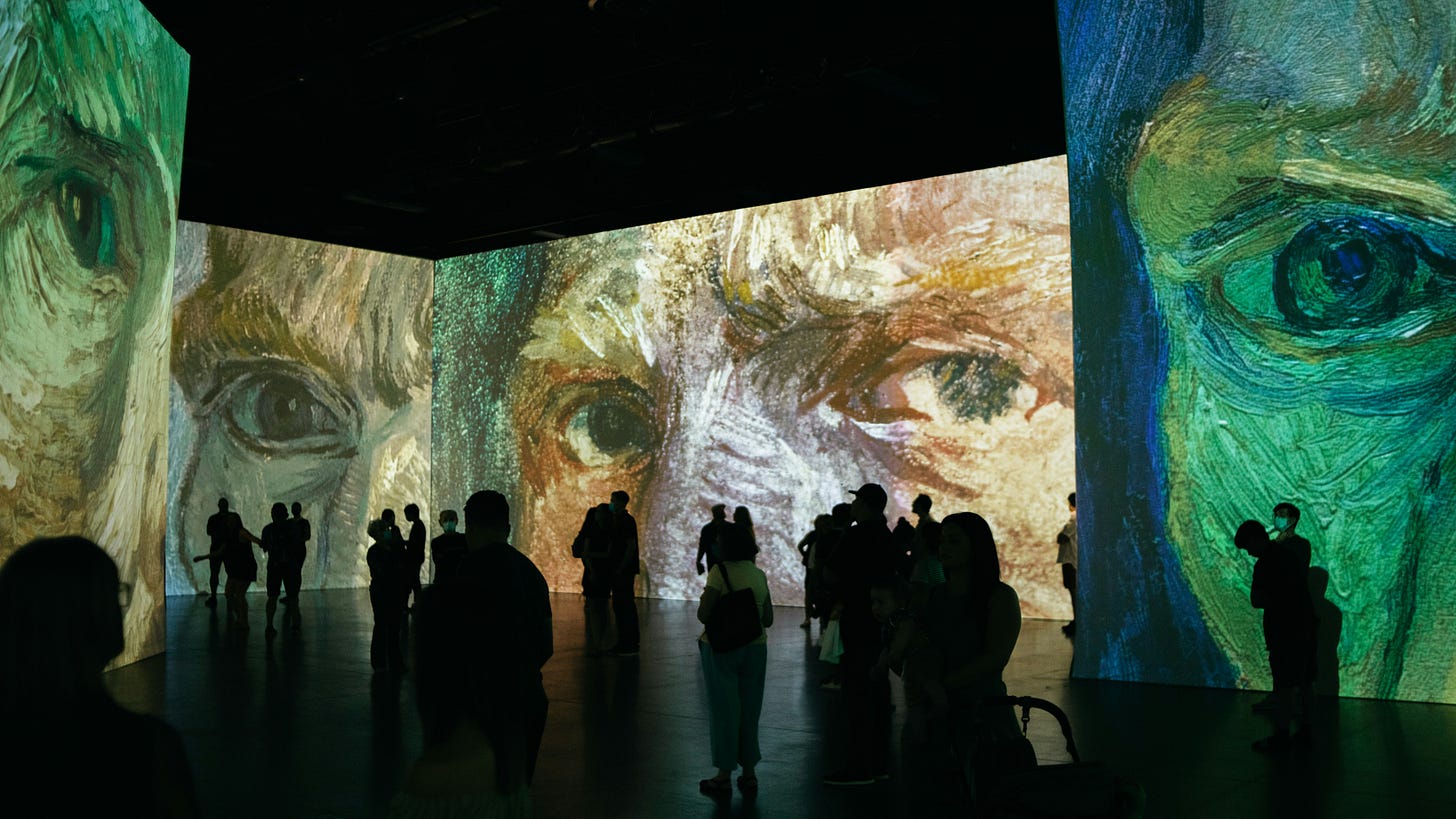
In the cultural sector, digital still too often gets treated like a side dish - useful, necessary even, but never the main event. Something to quietly “make available online” after the real thing’s done. The mindset is archival, not experiential - a focus on what’s there rather than how it feels to engage with it. And that shows.
The result? Clean, well-behaved virtual tours. Digitised artefacts in tasteful grids. Video panels explaining context in gentle, reassuring tones. Technically sound. Emotionally vacant.
We talk about digital like it’s a limitation.
“We can’t quite recreate the atmosphere.”
“It’s hard to replicate the magic of being there.”
“We’ve translated the exhibition as best we can.”
But here’s the thing: the web isn’t a translation tool. It’s not a photocopier. It’s a medium in its own right - rich, layered, sensory in its own way. The problem isn’t that digital lacks the power to move people. The problem is we rarely give it permission to.
Part of that comes down to legacy thinking. Many institutions still see digital as a broadcast tool - a way to extend visibility, distribute information, log the archive. It’s not there to hold meaning. It’s not trusted to carry complexity. In some places, it’s barely trusted at all.
And so the real decisions - the creative risks, the emotional moments, the ideas that might raise an eyebrow - those tend to stay in the room. In the gallery. On the stage. Digital picks up the leftovers. A documentation pass. A backup.
Some of that comes from fear. Once something’s online, it’s permanent, right? It can be shared, misquoted, screenshotted. And that makes people cautious. But caution is no excuse for making something dull. A grid of objects with polite captions might be safe, but it’s not memorable. It’s not moving. And if we’ve decided digital should only ever be neutral and tidy, then we’ve misunderstood its potential entirely.
Prior to my career in web, I spent over a decade working as a live sound engineer - mostly for music, but often in crossover spaces too. Touring theatre productions, temporary exhibitions, private art installations - places where the lighting and audio were just as carefully tuned as the artwork. These weren’t just technical gigs. They were exercises in atmosphere. Sometimes it was subtle: a low hum under a lighting shift, a barely audible loop in an installation room. Other times it was bolder - audio that swelled, startled, echoed, unsettled.
We didn’t think of these things as “content”. They were part of the architecture. You didn’t watch them. You absorbed them.
And that’s what I keep coming back to when I see digital projects that still treat the web as a second-tier format. Culture doesn’t need to be “translated” for digital. It needs to be reimagined.
This doesn’t mean VR headsets and interactive 3D models for every exhibition. Sometimes the most powerful digital experiences are the simplest - a single story told well, a moment of silence designed in. But they only happen when we think with the medium - not around it.
If you start with “how do we get this online?”, you’ll likely end up with something flat.
If you start with “how might someone feel when they encounter this?”, you might get something worth staying for.
And maybe that’s the shift that needs to happen. Not just better tools, or better funding - but better instincts. A move away from digital as documentation, and toward digital as encounter. Not just a place to store meaning, but a place to create it.
The best digital work I’ve seen lately didn’t ask for permission. It led with feeling. It invited risk. That’s the work I want to see more of - and be part of.
Because the web isn’t holding us back. We are.
Written by Stu Collett – web veteran & recovering perfectionist.
Enjoying The Byte Stuff? You can subscribe for free to get future posts by email – no spam, no pressure, just occasional digital reflections.

